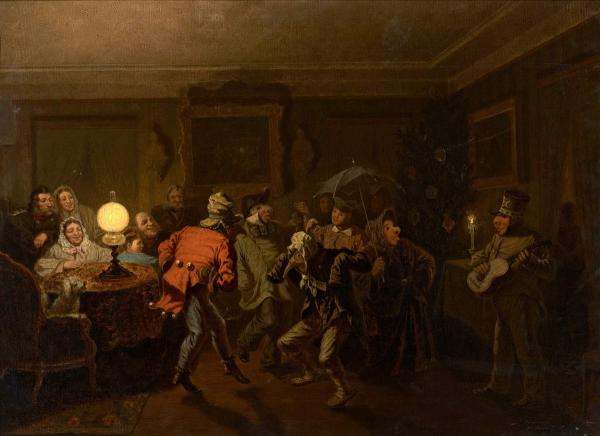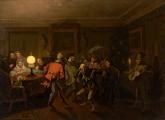Mummers
1873
- Period Late 19th century
- CategoryGenre Painting
- Share
A popular amusement at Christmas time in Russia was dress up so as to be unrecognizable and then play the fool, having fun and frightening others with one's comic appearance. Unmarried girls and young men dressed up as hideous old men and women, hunchbacks, quacks, Petrushka or scarecrows. The comic effect of the disguises was intensified by outrageous behaviour. Entire groups of people would go from house to house in disguise, dancing, screaming, joking and fooling around, arousing hysterical outbursts of laughter. The tradition of dressing up at Christmas time can be traced back to pagan times. The earliest disguises were anthropomorphic masks of goats, cows and horses. A procession of several people leading a "goat" would perform an entire show, the songs that they sung revealing the significance behind their actions. Play and Passion in Russian Fine Art. St-Petersburg. 1999. P. 84.
The fortnight after Christmas was a time of boundless cheer with many different rituals and amusements. Putting on masks was a widespread custom across Russia. This related to the belief that the demons wandering the earth in the eight days after the birth of Christ could torment and entice you unless you deceived them by dressing up as the devil. Thus adorned, people would wander from house to house, scaring away the demons, and in each house they could expect hospitality. Play and Passion in Russian Fine Art. St-Petersburg. 1999. P. 84.

